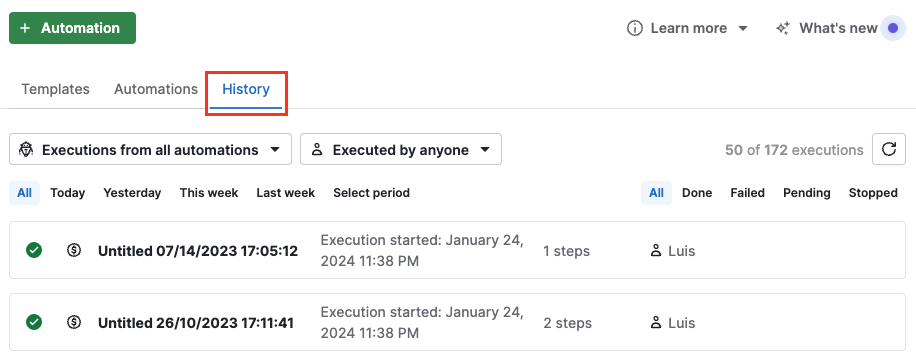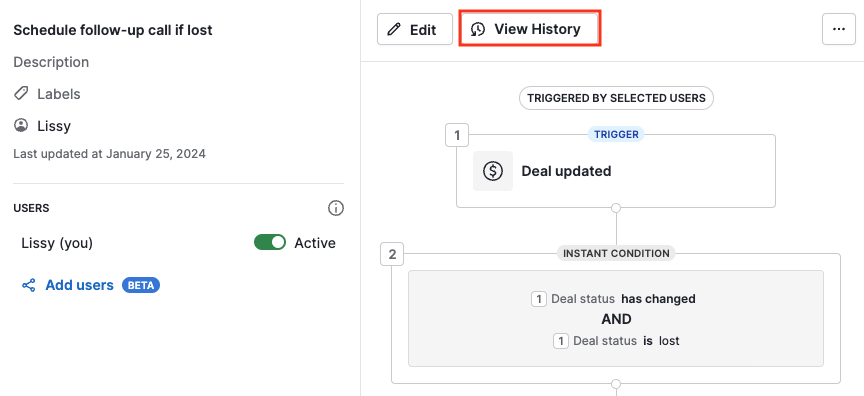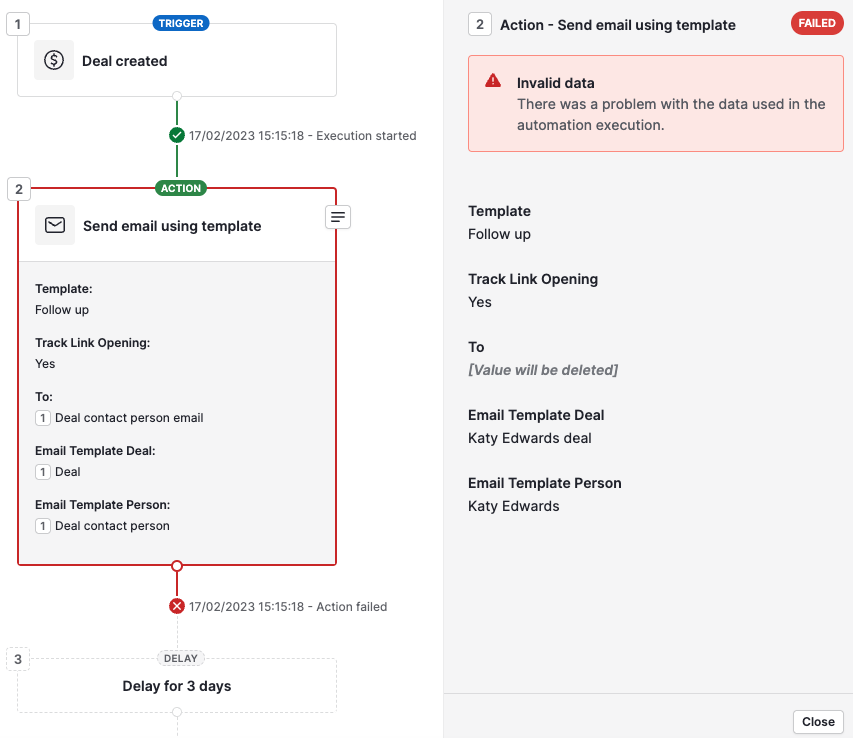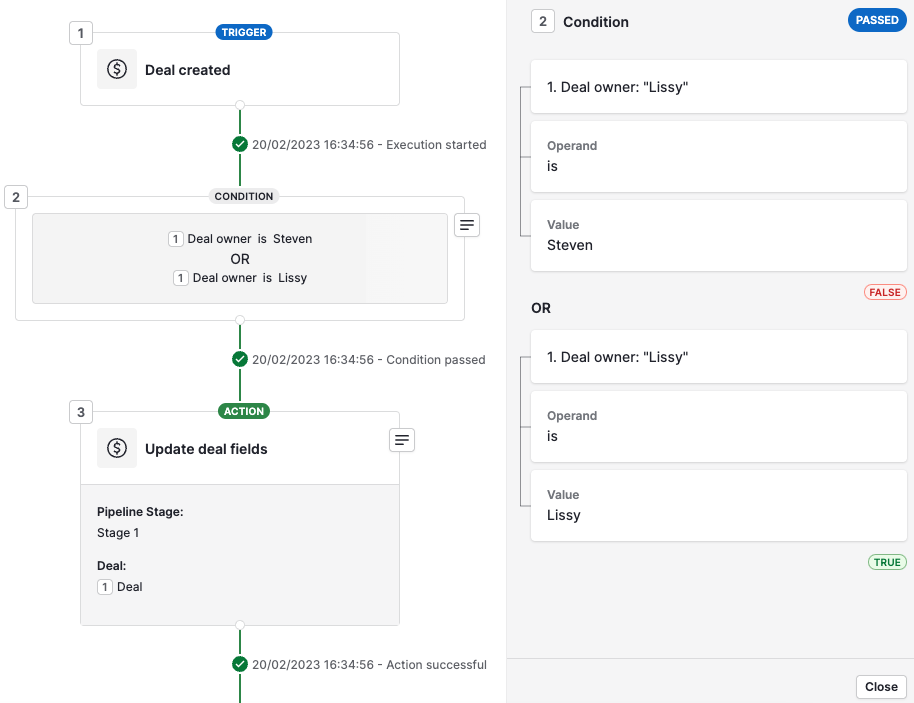Automations: history
When working with automations, you often have a lot going on in the background, and it can be difficult to keep track of everything your automations are doing.
The automation history feature lets you view a record of the actions performed by your automations.
Where to find the automation history
To find your automation history, go to Automations > History.

You can also view a specific automation’s history by clicking “View History” when opening an automation.

What is the status of your automation?
When viewing your automation executions, there are four possible statuses that you might see:
| Status | When is it shown? |
|---|---|
 | All automation steps were executed successfully. |
 | An automation step failed when trying to be executed (e.g., action failed due to lack of permissions or connectivity issues). |
 | An automation step is pending execution – this is very common when a delay step is added (e.g., on the first day of a three-day delay).
This can also be normal when an automation takes a bit longer to be processed (e.g., an email being sent). |
 | An execution can’t be processed, but not because of a failure with the automation. This is typically caused by:
|
How to check the details of a given automation’s execution
Once you’re in the automation history tab, you can click on any of your listed executions to see a timeline detailing the steps performed for the automation, as well as timestamps for when these steps occurred:

In the case of a failed or stopped automation, you’ll be able to see where the automation stopped.
If you click on that step, the sidebar view will show what caused the failure:

As well as which conditions were recognized successfully if multiple conditions are being considered:

In this example, the first condition was not satisfied and shows as false. The second condition, however, shows as true, meaning the automation was able to run successfully.
Reasons for automation failures
There are a variety of reasons why you may experience errors related to your automation, which can be explained in your automation history:
| State | Title | Message |
|---|---|---|
ReachedRateLimit | Maximum frequency limit reached | Maximum automation execution frequency limit reached. |
FailedWrongData | Invalid data | There was a problem with the data used in the automation execution. |
FailedUserInactive | Inactive user | User is inactive. |
FailedUnknown | Unidentified execution error | Something went wrong. |
FailedPermissions | Insufficient permissions | The user executing the automation doesn’t have sufficient permissions. |
FailedMaxRetries | Maximum retry limit reached | Maximum number of automation execution retries reached. |
FailedCompanyInactive | Inactive company | Company is inactive. |
FailedActionQueuePush | Unidentified execution error | Something went wrong. |
FailedActionCreation | Invalid data | There was a problem with the data used in the automation execution. |
In the case of some errors, you’ll be able to verify the source of the error by checking the data in your account.
For example, if you receive the error FailedUserInactive, you can check your manage users settings to verify that the user in question is inactive.
Was this article helpful?
Yes
No